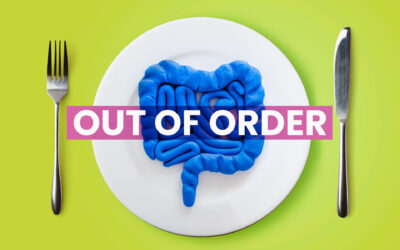Did you know that what comes out of your body is just as important as what you put in?
Do you ever peer into the toilet bowl and think that maybe your poo isn’t what it looked like last week? Do you feel like you’ve been straining? Bloated? Diarrhoea?
Sit back, relax, and learn. It’s time to take the shame away and get you up to speed on what your poo (or whatever you choose to call it) is supposed to look like. And what to do if it isn’t so good by incorporating simple changes to ensure you have healthy number twos.
Let’s start at the easiest place. Being able to identify the type of poo you have.
The Bristol Stool Chart
Believe it or not, the topic of what poo should look like has been researched extensively. Two scientists from the University of Bristol developed a seven-point stool form scale, describing all the types of poo, from constipation to diarrhoea (Lewis & Heaton, 1997).
The beauty of this chart – it’s a world-wide reference tool, validated in multiple languages and is incredibly simple. The most significant benefit for you is being able to describe what you are seeing in the toilet bowl without getting embarrassed or flustered. Just point and smile.
Check out our version of the Bristol Stool Chart.
The Gut Performance Poo Chart


1. Rabbit Droppings
Separate hard lumps, tricky little buggers to get out. Lacking fibre and fluids. Drink more water, eat more veggies and take Gut Performance once or twice a day.

2. The Lumpy Sausage, But No Sauce
Not as bad as 1, but increase fluids and take Gut Performance once a day until sausage easy to pass and looks like Type 3 or 4.

3. Champion
Sausage with cracks in the surface means your poo is normal though the cracks may suggest you still need more water.

4. The Optimal Poo
Soft and slips out nice and smooth means your poo is normal. Easy to pass so keep on doing what your pooing!

5. Raw Meringue
This is a common one for those who are not eating enough fibre, soft blobs with clear-cut edges. Time for a dose of Gut Performance!

6. Mush
Mushy with ragged edges – mild diarrhoea. Need to get that microbiome back to normal. Gut Performance twice a day for you!

7. Uh oh, Liquid Poo
Could indicate an infection and your body trying to get rid of it. Drink lots of water and take it easy.
What’s normal poo?
Healthy poop is as varied and unique as everyone. But, there are a few general characteristics that you need to know to assess your poo if you want to work towards optimum health and wellbeing.
Colour
Everyone knows that poo is brown. But do you know why? It’s because of bilirubin. ‘Billy,’ as the healthcare professionals call it, is a pigment formed from the breakdown of red blood cells in the body and eventually excreted out through the digestive tract. This is completely normal.
But when it isn’t brown, you need to look at the reasons why. Some are serious – dark red could indicate bleeding in the upper digestive tract. But some aren’t so serious – you drank a lot of beetroot juice the day before. Sometimes poo can look almost clay-like. This could indicate a blockage in your gallbladder.
The most important thing – if there are colour changes and you can’t directly relate it to a recent dietary choice (such as beetroot), you should get yourself checked out by a health care professional.
Shape
Usually, it comes out like a log. This is because of the way it forms in the intestine. But, as you will learn shortly, this isn’t always the case. There are many variations of poo. And when they change, that’s when your body is trying to tell you something…….and you should listen.
Size
Faeces should come out comfortably in a beautiful 7-10 cm sausage formation. There are a few slight variations, but the scope for differences isn’t broad.
Consistency
Anywhere between firm but flexible and soft but fully formed is what you are aiming for. If it is harder or not fully formed, the body is giving you clues that there is some digestion or fibre issue underway.
Length of time (how long it takes)
A healthy poo should be easy to pass and come out naturally without too much waiting around or straining. You get a sensation to go, you sit on the throne, and then you go. No waiting around to push it out.
Frequency (how often)
Most people do a poop at the same time every day. A person with a healthy digestion ‘can move the boat’ up to three times a day.
But, anything less than every other day, you would be classified as having constipation, and action needs to be taken.
As you can see on the Gut Performance™ Bristol Stool Chart, we have given a few tips to make sure you get the healthiest poo. Let’s go through why making these small changes of water, fibre and prebiotics can make a massive difference in helping you attain good gut health and perfectly healthy poo.
Why is water so important?
The most obvious thing about poop formation is the amount of water content. Faecal composition is around 70 – 75% water. The more water, the softer the stool. The less water, the harder the stool.
The large intestine is a juggernaut of recycling and repurposing for the body. The longer it takes for food to pass through the large intestine, the more water gets reclaimed. Then the poo becomes drier and harder.
Therefore, factors affecting the transit rate of food through our gastrointestinal tract will have a significant influence on stool formation.
Everything from medications to physical inactivity can potentially reduce how well the gut contracts. This slows the passage of food through the large intestine. This increases the transit time and therefore increasing the amount of water that is reclaimed by the body.
What’s the deal with fibre?
I know you have been hearing it for years on the television commercials, but really fibre is essential. And not just for old people.
It’s well recognised that fibre is essential for regular bowel motions. This is because fibre increases stool weight. The more fibre present, the more water is held (Slavin, 2013).
When a healthy and well-hydrated person eats fibrous foods with lots of roughage, the fibre takes up water and swells. This increases the volume of the poo. At the same time, it dilutes and clears toxins that may have been ingested with the food.
Larger, softer stools reduce the transit time through the intestinal tract and ease the passing of the package into the toilet bowl. This, in turn, relieves constipation (Slavin, 2013).
Why is everyone so excited about prebiotics?
Essentially, prebiotics are non-digestible plant fibres found in vegetable, fruits, legumes and products such as Gut Performance™. Although all prebiotics are fibre, not all fibre is prebiotic.
To be prebiotic, it must fulfil specific criteria:
- Resist gastric acidity and absorption in the upper gastrointestinal tract.
- Be fermented by the intestinal microflora
- Stimulate the growth and activity of intestinal bacteria potentially associated with health and wellbeing (Slavin, 2013)
To make it simple – these prebiotic fibres don’t get broken down in the small intestine. They move through to the large intestine and become a critical nutritional source for the trillions of bacteria that inhabit the colon. In effect, they feed the beneficial bacteria in your gut (particularly bifidobacterial and lactobacilli).
These valuable bacteria then go on to support healthy digestion and immune function (Slavin, 2013).
Essentially, prebiotic superpowers produce a diversity in the bodies microbiome, improve the gut barrier function and immunity, and reduce potentially dangerous bacteria subpopulations (Valdes, Walter, Segal, & Spector, 2018)
Eating a wide variety of prebiotics encourages the growth of different bacteria that specialise in breaking down the different types of fibres. It has been shown that a diverse microbiome that has loads of various beneficial bacteria is commonly linked with good health outcomes (Valdes, Walter, Segal, & Spector, 2018).
The take-home message – together with dietary fibre, prebiotics are a critical component to promote optimal gut health and staying in the range of type 3 and 4 on the Bristol Stool Chart.
Gut Performance™ includes prebiotics in the form of a scientifically formulated fibre sourced from red sorghum and sugarcane stem. The sucrose has been extracted from the sugarcane by a patented process that allows the whole-cell fibre of the sugarcane stem and its micro-nutrients to remain intact.
The best way to ensure you remain healthy and regular is to eat a diverse range of wholefoods and maintain adequate hydration through drinking water. You can also add an extra boost to the variety of prebiotics in your diet by taking a daily dose of Gut Performance™
If you find you are being troubled by ongoing poo problems, or you are unsure about any bowel changes that you have; don’t let it fester. Make sure you go to a health care professional you trust to talk about your concerns. Knowing the types of poo and what ‘the normal range’ is will help you get your gut health back on track.
Works Cited
- Lewis, S., & Heaton, K. (1997). Stool form scale as a useful guide to intestinal transit time. Scand. J. Gastroenterol., 32(9), 920–4. Retrieved 12 2, 2019, from https://www.ncbi.nlm.nih.gov/pubmed/9299672
- Slavin, J. L. (2013). Fiber and Prebiotics: Mechanisms and Health Benefits. Nutrients, 5(4), 1417-1435. Retrieved 12 2, 2019, from https://ncbi.nlm.nih.gov/pubmed/23609775
- Valdes, A. M., Walter, J., Segal, E., & Spector, T. D. (2018). Role of the gut microbiota in nutrition and health. BMJ, k2179. Retrieved 12 2, 2019, from https://www.bmj.com/content/361/bmj.k2179
DISCLAIMER: the information is provided as an information resource only and is not to be used to relied on for any diagnostic, treatment or medical purpose. All health issues should be discussed with your GP and/or another qualified medical professional.







